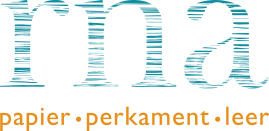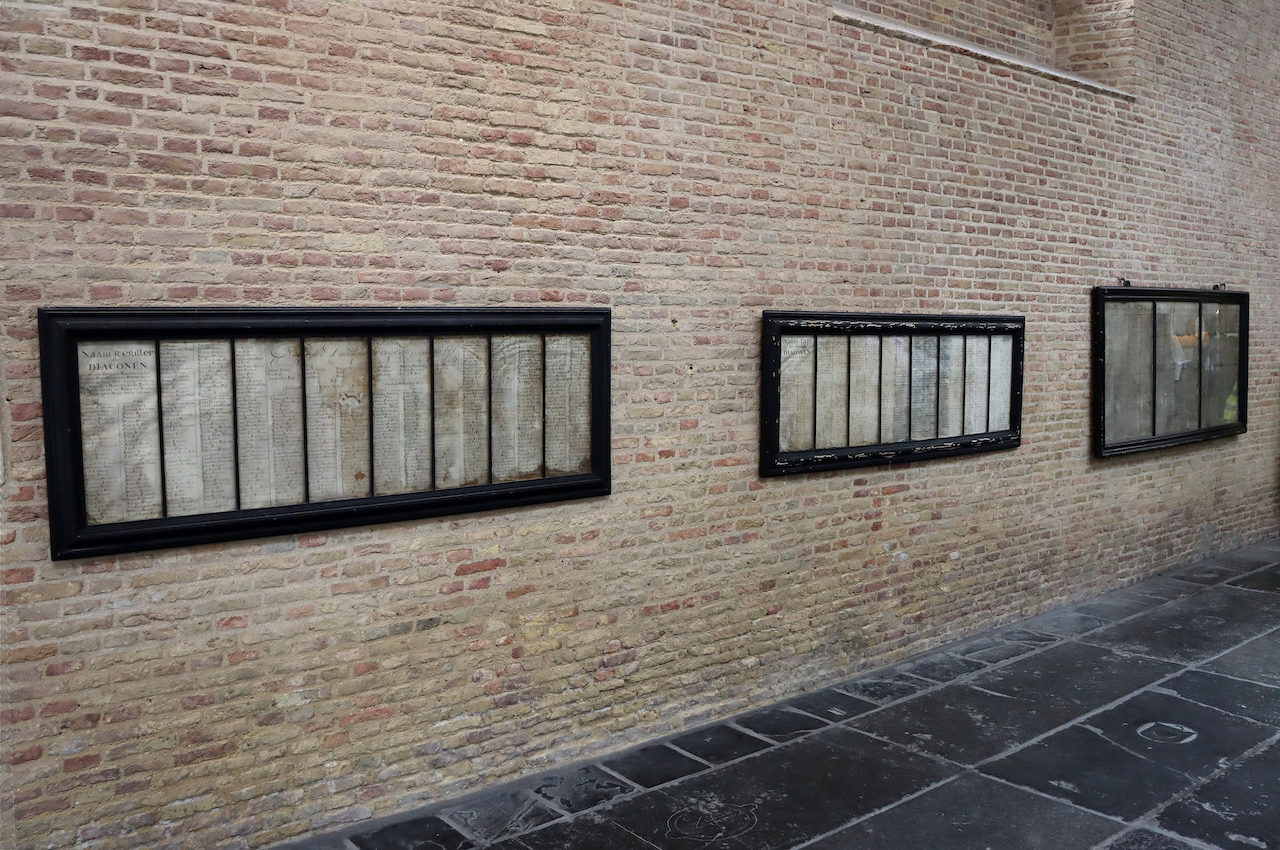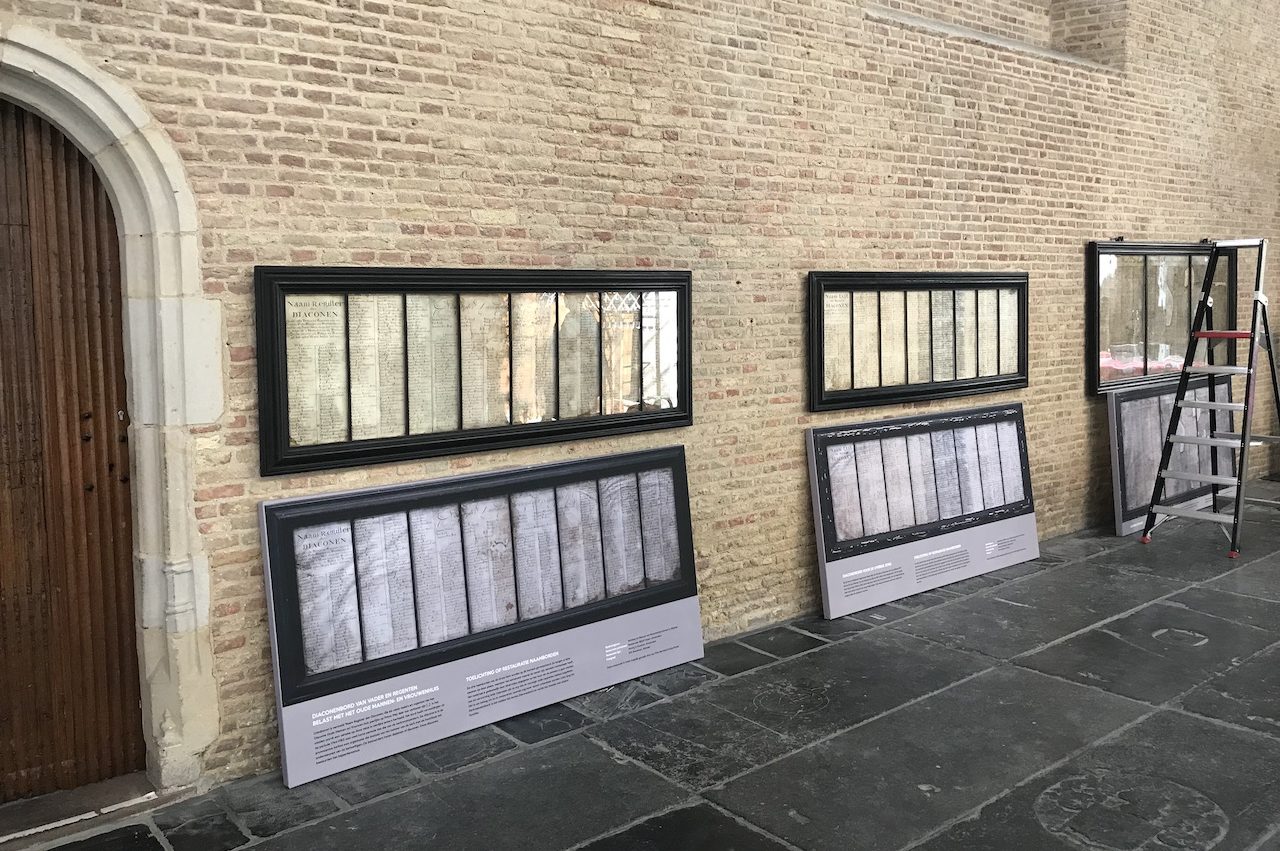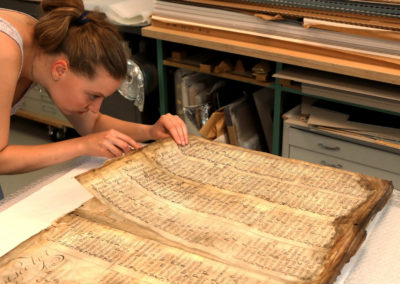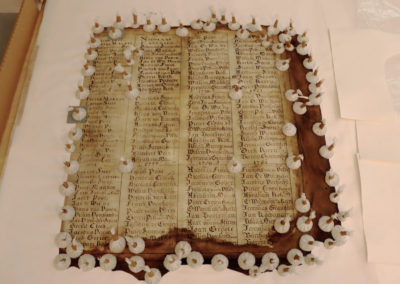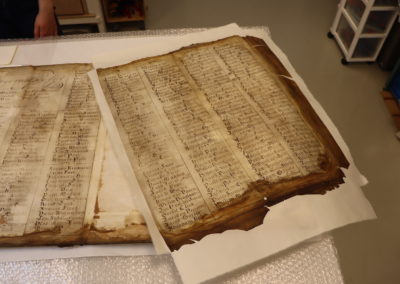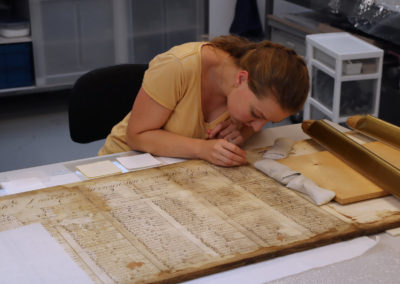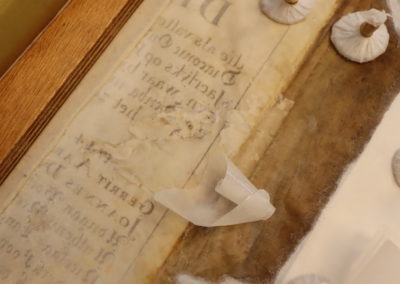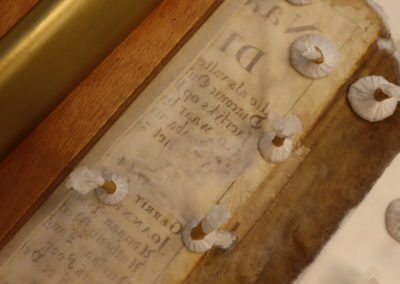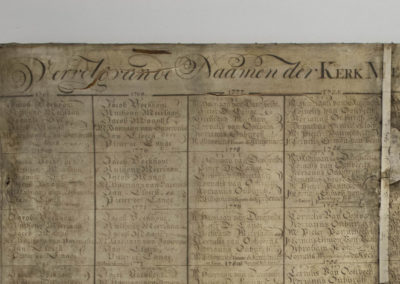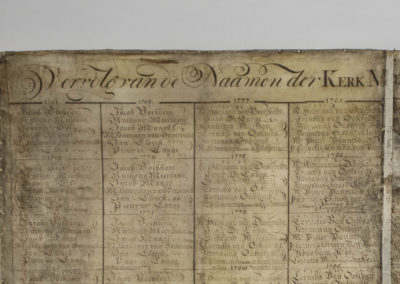Construction and damage
The carrier for the parchment consists of two and respectively four oak boards. On these, first a layer of paper is fitted (in two of the three cases) and then the parchment is attached to it. Therefore, the parchment reached around theedges of the planks. The boards are framed with wooden, black coloured frames. These are divided by stanchions, which also fix the glazing. To the backside, the boards are only fastened in their frames by several wooden bolts.
For the last centuries, the boards were displayed in the Grote Kerk. First in the consistory chamber, later in the choir ambulatory. As the frames are open to the backside, a lot of dust, debris and grit from the stone walls have conglomerated and gathered in between the different layers. By a former leak in the roof of the church, the parchment has suffered water damage. This caused discolouration and a partially advanced degradation of the parchment to the extent that the damaged areas have become water soluble like gelatin. On all three objects widespread deformations of the parchment are found. In contrast to the two other boards, the ‘Kerkmeesteren’ board has a disadvantageous wooden construction, which resulted in horizontal tears along the borders of the planks. Previous repairs have been applied at an unknown time. Due to the different material and ageing characteristics, these repairs stand out as much lighter patches.
Conservation treatment
After dismounting the boards, the frames went to the atelier Hoving & Klusener for further conservation. The boards remained in our studio, where all examinations and the conservation treatment were performed. The work took a period of more than a month.
The approach of the restoration was to preserve as much original material as possible and to secure all fragile parts. To regain visual cohesion, the defects were blended in with Japanese paper. The parchment should not directly be glued back to the wood, but rather, be fixed with strips and hinges of Japanese paper. Thereby, as much flexibility as possible can be obtained since parchment is a very environmentally reactive material.
Initially, the name-boards have been intensely cleaned. As much dirt as possible was removed from all surfaces and from in between the layers. After some test series on adhesives and the application techniques, all tears were closed with dyed precoated Japanese paper. The lacunae have been filled with Japanese paper, as well. To smoothen the deformations as much as possible, the deformed areas were lightly moistened through a semipermeable membrane. Then they have been fixed in the desired position and allowed to dry. Due to the fragile state of the parchment, not all areas of the parchment could be processed in this manner, as some areas would immediately gelatinise upon contact with water. For the flattening, the parchment has been partially removed from one board, all remaining parts were treated in-situ. As one of the last steps, the loose edges of the parchment were fixed with tensioning paper strips to the sides and the backside of the boards.
After reframing the three boards, the backsides of the frames were covered with a layer of Tyvek sealed to the frame with gummed Tyvek tape. This protects the boards from contact with dust and debris. By now the conservation is completed and the three parchment name-boards are returned to the Grote Kerk Alkmaar.
Hanna Böhmer
Book and paper conservation student
University of Applied Sciences Cologne (TH Köln)
